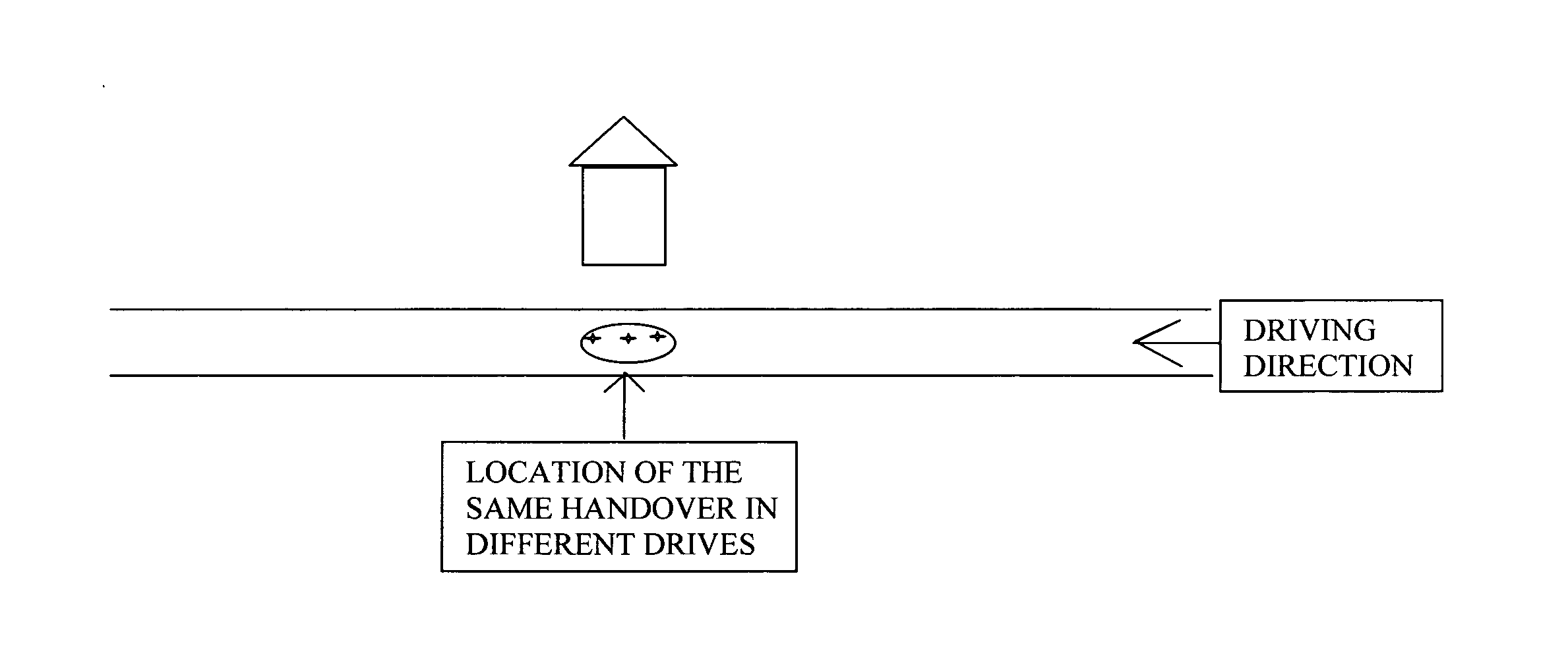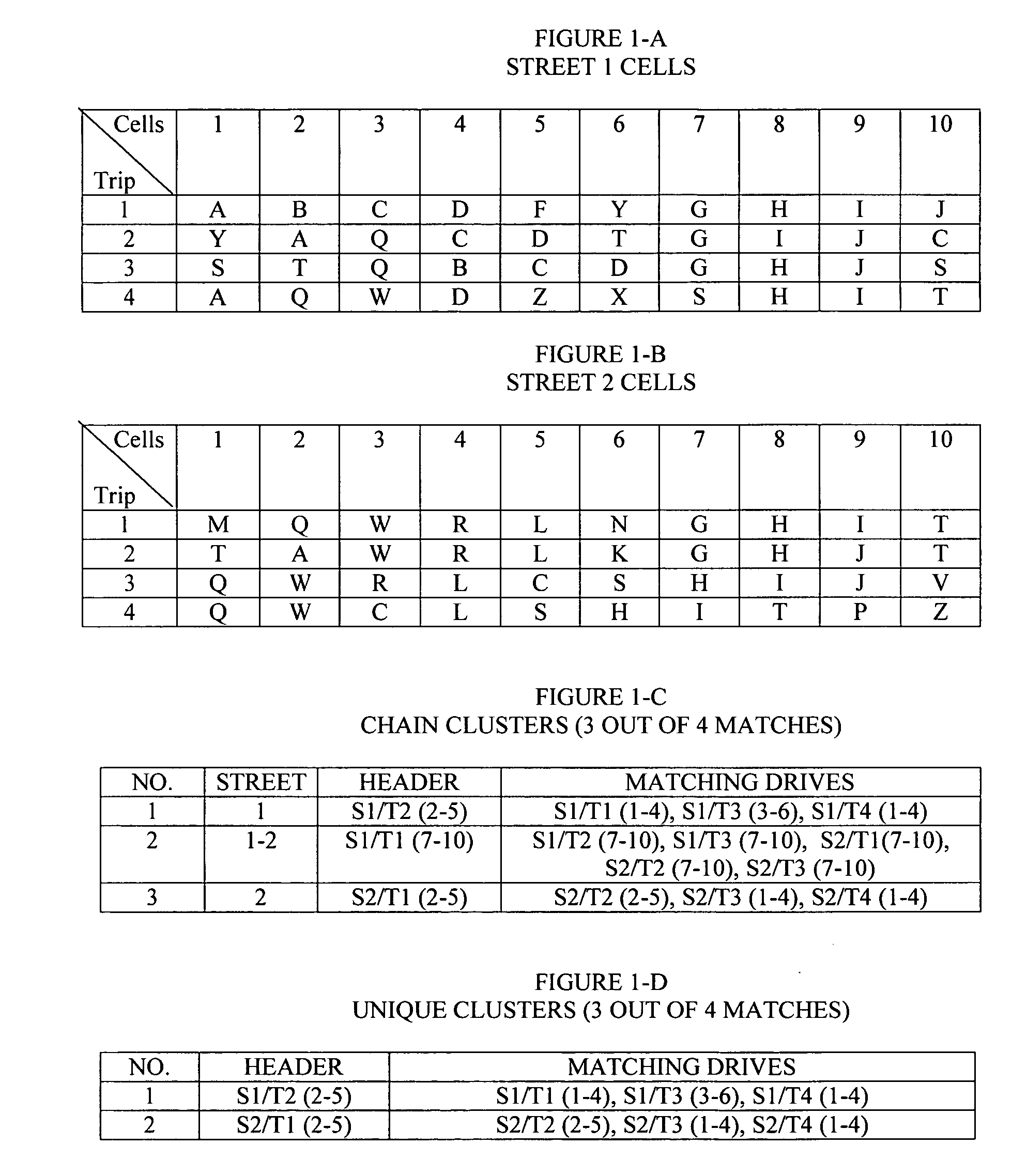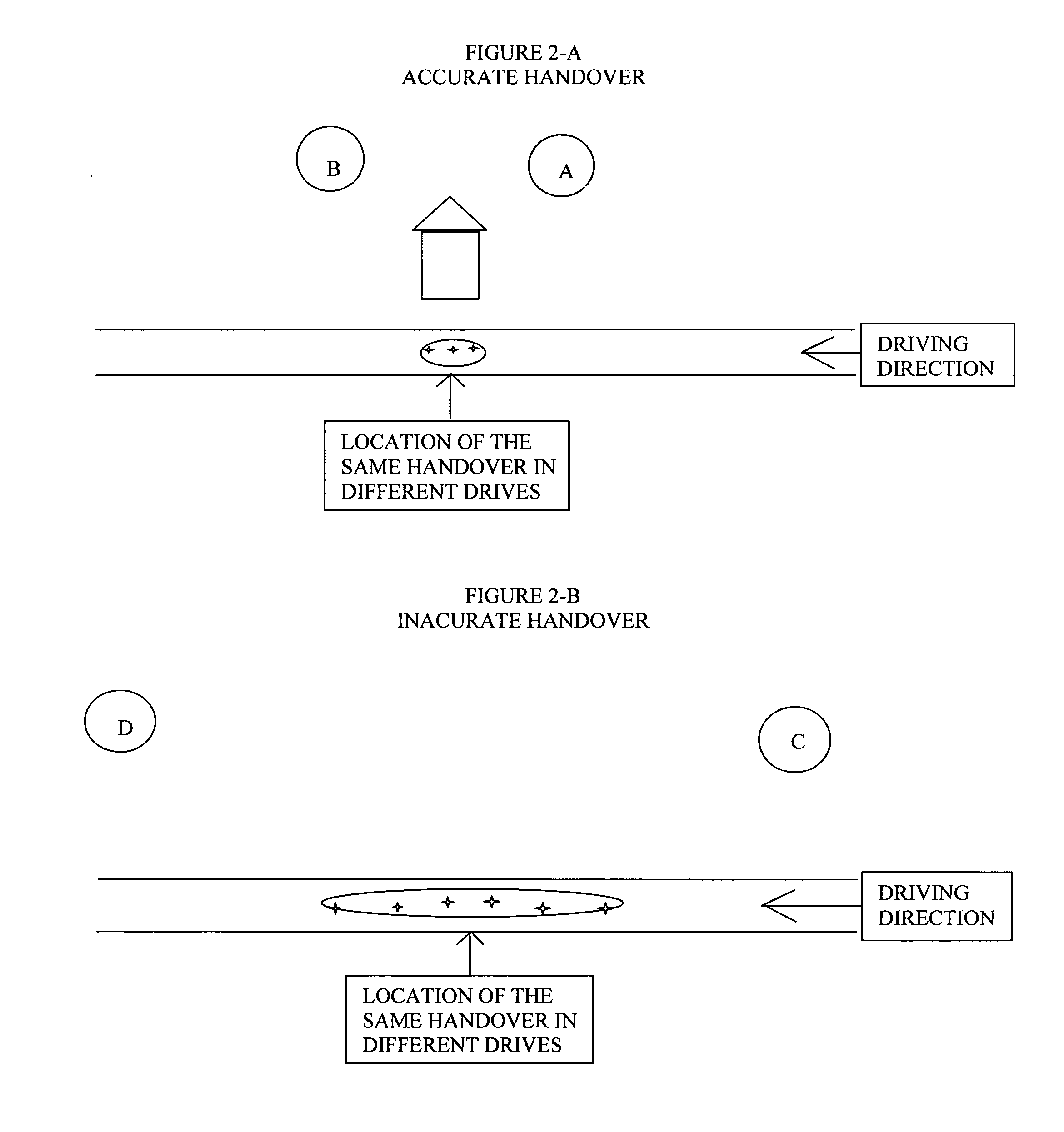Method for measuring road traffic load based on analyzing cellular communications
a technology of cellular communication and traffic load, applied in the direction of vehicle position indication, location information based service, instruments, etc., can solve the problems of not giving a full solution to the real-life handover sequence received in urban areas, and kennedy does not provide a solution
- Summary
- Abstract
- Description
- Claims
- Application Information
AI Technical Summary
Problems solved by technology
Method used
Image
Examples
Embodiment Construction
Determination of Handover Locations and Signal Strength Along Routes (Learning)
[0016] The 1st stage in the method is the learning stage, which is done prior to or in parallel with system installation as off-line processing. In this stage a database is created, containing handover (cell switch) sequences per route and can also contain location reference for each handover. This can be collected by actual drives on each route, and extracting the information from mobile units in the vehicles driving in any road and in any direction within a designated area.
[0017] The learning process through drives can be carried out in several ways, one of these ways is: vehicles with location determination system, such as synchronized GPS system, yielding continuously an accurate location and with operating cellular mobile unit travel across the designated area covering each road, in any driving direction and all possible turns. The handover information and the signal strength information for these...
PUM
 Login to View More
Login to View More Abstract
Description
Claims
Application Information
 Login to View More
Login to View More - R&D
- Intellectual Property
- Life Sciences
- Materials
- Tech Scout
- Unparalleled Data Quality
- Higher Quality Content
- 60% Fewer Hallucinations
Browse by: Latest US Patents, China's latest patents, Technical Efficacy Thesaurus, Application Domain, Technology Topic, Popular Technical Reports.
© 2025 PatSnap. All rights reserved.Legal|Privacy policy|Modern Slavery Act Transparency Statement|Sitemap|About US| Contact US: help@patsnap.com



